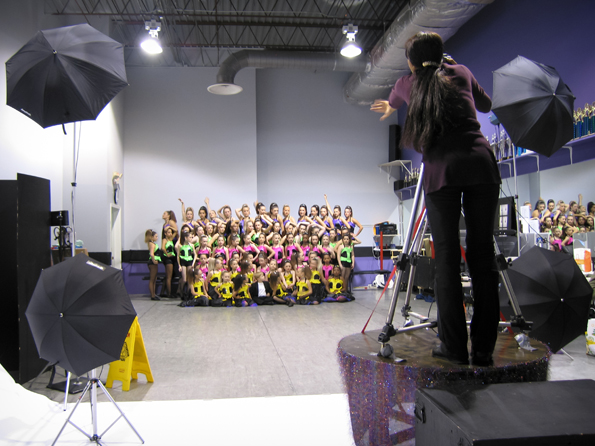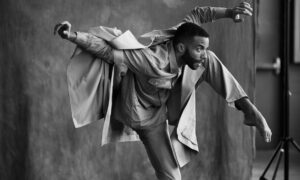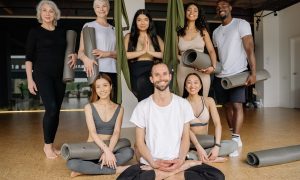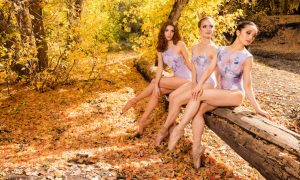Creative careers in dance related industries – Part One.
By Emily Yewell Volin.
The Chinese philosopher, Confucius said, “choose a job you love and you will never have to work a day in your life”. This is one of my favorite quotes; however, when I reflect upon it with students I am often met with cynical disbelief of its practicality. People want to experience career success; and we want to be able to say we enjoy and find relevance in our work. Most dancers aspire for professional performance work and many will achieve this goal but the fact remains that a dancer’s prime performance years are limited; if ever realized. The high incidence of injury and burn out leaves many dancers facing a career transition when least expected. However, if dance is a person’s passion, an evolving career within the field translates to immense job satisfaction for many transitioning artists. Developing your passions within the field of dance is a lot about diversifying your potential and developing the practical application of your talents. The analytical skills, perseverance and discipline learned through the study of dance are well known to help individuals recognize and commit to virtually any aspiration. With a little creativity and an open mind, a dance artist can produce and enjoy a lifetime of work in the field long after leaving the stage.
I’ve contacted many dance artists and collected their stories of dance life beyond the stage for this new series of articles. I treasure the conversations I had with these artists. The resulting interviews are both informative; and perhaps even more importantly, inspiring. Enjoy.

Allie Parsons, presently with Cental PA Youth Ballet, wearing a Tutu.Com Polka Dot Practice Tutu. Photo: Brian Mengini
Costume Design
Claudia Folts, Co-Founder and a costumer for Tutu.com
Tutu.com specializes in classical and romantic tutus, having made them for dancers worldwide, both aspiring dancers and professionals in companies like NYC Ballet, American Ballet Theatre, Boston Ballet and NC Dance Theatre. http://tutu.com
“I was a trainee at the Harkness House for Ballet Arts in NYC back in the 70’s. I danced in various companies: NYC Opera, Baltimore Ballet, Chicago Ballet, etc. I founded a ballet school and regional company called Charlotte City Ballet and I taught for NC Dance Theatre’s company and school. I was like the “Princess and the Pea” with costumes – always taking them home and cleaning them, adding ribbon to cover up itchy seams, and re-working headpieces, etc. When I was in Baltimore Ballet, I got some tutus that had been made at the Royal Ballet and had been ruined in a fire. I took them apart and made my first patterns. A dancer I knew named Sylvester Campbell had just retired and was heading the new Baltimore School for the Arts. He heard I was teaching myself to make tutus and called and asked me to make 12 for the school. By the time I finished, I had a vague idea what was involved, and I was hooked. I think that costuming and design, for me, was a natural extension of dancing. My background as a dancer gives me such helpful knowledge. I know all the ballets, I know what costumes are appropriate, I understand the movements and the necessity of certain costuming techniques to help give the dancers freedom of movement, and I know how to listen to both the dancer’s and the choreographer’s concerns and needs.
Find something that you are passionate about and understand that the process is the most important thing. You really have to enjoy whatever you choose to do in order to give it your best and be good at it. I think that dancers who have worked in the profession successfully, really do understand this, so as long as they find something they are passionate about, they will be successful.”

Arts Administration
George Thompson, Director Ferst Center for the Arts at Georgia Tech University
George has over 25 years of experience in Arts Administration. A former dancer with ABT with performance experiences on Broadway and in contemporary dance. www.ferstcenter.gatech.edu
“The fact that I was lucky enough to dance with the American Ballet Theatre and experience the intense performance schedule of preparing for and performing 8 concerts a week got me used to multi tasking. I learned how to manage my energy to move forward and to wear many hats. My performance career also taught me that politics are everywhere. The Puritan concept of working hard being enough to get you recognition only goes so far. Hindsight has allowed me to realize how these political events in dance have prepared me to stand up for myself in Arts Administration. My professional performance career has also instilled in me the dancer’s tradition of passing the torch and collaborating in order for all to flourish. These help me because I strive to create more and more connectivity between my role and the community’s role in working together to become bigger and better. So, while one would originally think of a performance career as something that would only inform an aesthetic view, those experiences really did inform my approach to management.
I would advise dancers to really take a look at every opportunity they have to grow. Find the opportunities to create connections to your passion. College dancers have a specific opportunity to take elective classes of interest. For instance, a leadership seminar, a foreign language or an accounting class may make future opportunities possible. Also, you might get out of school and in two years decide to start your own company. Then you find yourself responsible not only for the artistic product but the check book, the grant writing, virtual or real social networking and other business responsibilities. The pursuit of a terminal degree in the fields of dance or management is also a valuable tool.
And, you need to take the time required for yourself. Dance is one of those careers where you are encouraged to ‘hurry up and get there’. Life does not stop at 30 years of age! Explore opportunities with multi-generational companies. There are increasing opportunities for older dancers.”

Sphyrl - Cortney Michelle, dancer, © Keiko Guest, Photographer
Photography, Dance and Fine Art
Keiko Guest, Keiko Guest Photography
Keiko Guest is an Asian/African American fine art photographer and a former professional dancer. She is most known for her portrayals of Atlanta’s dance community and was chosen to photograph international rhythmic gymnasts from all over the world during the 1996 Summer Olympics in Atlanta, USA.
A celebrated dance photographer, Keiko choreographs for the camera and is able to direct her subjects with a supernatural eye for capturing the human form. For more than 30 years, top media outlets have featured her photographs. Keiko’s photography has graced countless programs and playbills as well as several dance publications and newsletters.
Her work is in high demand in the performing arts community, and her credits include having served as company photographer for the Atlanta Ballet and the Atlanta Opera. www.keikoguestphotography.com
“I am a partner in business with Scott Nilsson in Keiko Guest Photography. I spent 40 years focused on ballet and contemporary, having danced with the Louisville Ballet and the Ruth Mitchell Dance Company. Now I’m working more on funk, lyrical and hip hop, plus tumbling, for the last two years. This year I added aerial fabrics, acro yoga, jiu jitsu and extreme tumbling. I will be turning 61 in January, so I should be peaking around 75!
I actually still dance and will perform if the timing and circumstances allow. Being a dancer myself gives me the freedom to become one with the dancer and their timing when I am photographing them. I may not always catch the right moment, but I know when that moment is….. without thought.
I would advise dance artists to stay connected and support the groups that utilize your talents. Dancers have a knack for camaraderie, so, developing closeness and relationships will keep you “their” vendor/servicer/provider of choice.”
Dance training is about more than performance; it’s about discovering and cultivating potential to perpetuate arts and movement in our culture. Next edition I will speak with more inspiring artists about successful careers in dance related industries.
Top photo: Keiko Guest at work
CREDIT: Keiko Guest – © Scott Nilsson, Photographer















